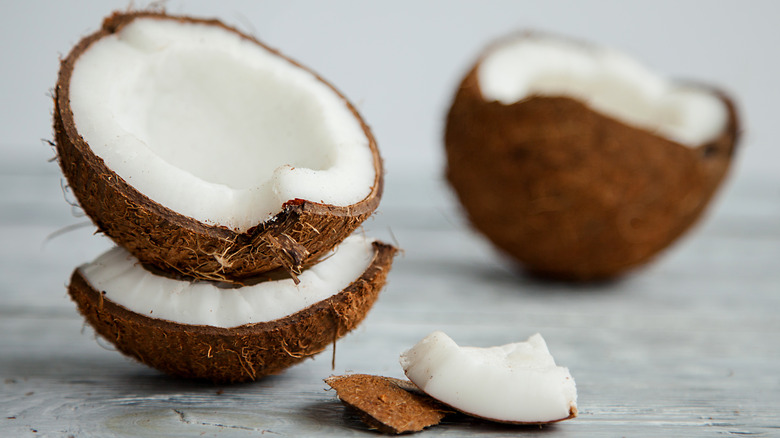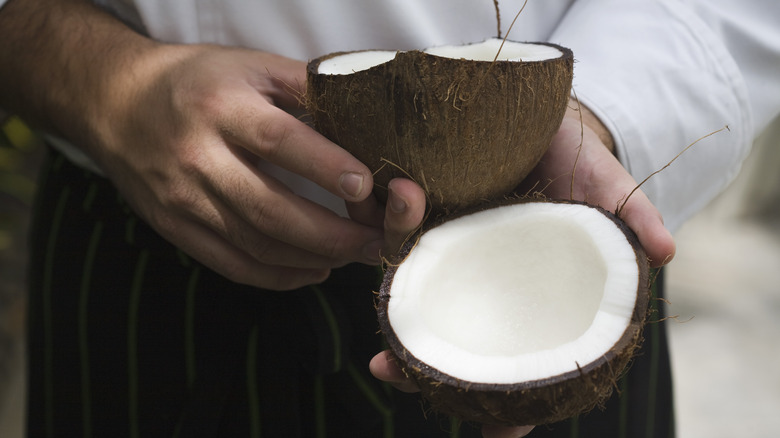The Step You Should Never Skip When Cooking With Fresh Coconut Water
Fresh coconuts can be refreshing and satisfying, but they needn't be limited to beach vacations and summer festivals. Coconuts can be blended into smoothies and gravies, used to cook grains, and give protein a flavorful boost.
Coconut water is found inside the cavity of the coconut, leftover from the maturation process. The flesh of a coconut forms from this liquid, so the coconut water of younger, greener coconuts is often more hydrating. As a coconut ages — you can tell from the outside of the coconut as it turns brown and hairy — the white flesh becomes sweeter and thicker.
Not to be confused with coconut milk, coconut water can be enjoyed straight from the fruit. Coconut water can also be purchased pre-packaged to drink, offering hydrating benefits with a mildly sweet taste. While creamy coconut milk is made from the fleshy part of the coconut and is more commonly used in recipes, coconut water can also play a role in tonight's supper.
Taste the coconut water first
At tempting as it might be to buy convenient canned coconut products, there's great satisfaction in bringing a fresh coconut home to use in recipes. Though cracking open a fresh coconut may feel like a heroic accomplishment, take a moment before incorporating the coconut's contents into your intended culinary projects.
Before you dump the coconut water into your mix, taste the water and flesh of the coconut. Coconuts can range in taste, from sweet and refreshing to a bit sour. With so much variation, you'll want to sample the coconut you've pried open before cooking anything with it.
Once you're confident the flavor of the coconut water will complement your intended dish, you can proceed to use it to make rice or stir it into a fish or chicken recipe. Try using coconut water as you prepare our Thai red curry chicken recipe, or add coconut water into the slow cooker to make curry chicken thighs.

